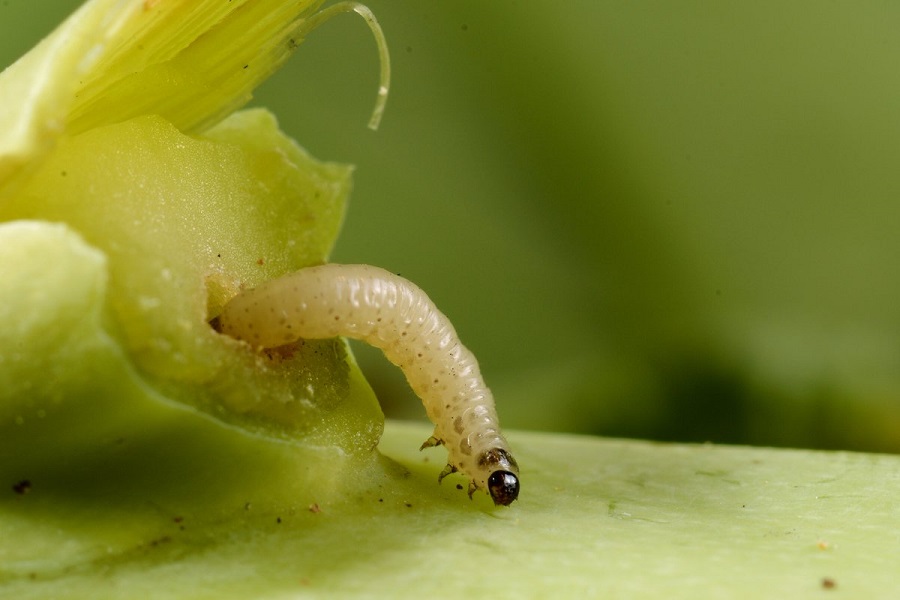With just over 60% of the national oilseed rape crop making it to harvest, a multipronged strategy will give the crop its best chance and varietal choice is one just part of the puzzle. CPM talks to Dekalb about the characteristics of hybrids and how these may help combat CSFB attack.
Too often speed of development is confused with vigour.
By Rob Jones
Varietal choice is central to most IPM strategies, maintains leading oilseed rape breeder Dekalb, and it’s becoming evident that some varieties seem to cope better with the burden of cabbage stem flea beetle (CSFB) larvae in the spring than others. But for all varieties the first hurdle is to survive during establishment and it’s finding a variety that has an edge in both of these scenarios that isn’t an easy task.

Richard Phillips explains that vigour is different to speed of growth and that there are significant differences in autumn and spring between hybrids in trials.
There are two strategies when it comes to choosing OSR varieties – go cheap and plentiful or go hybrid. Understandably with the crop under so much pressure from CSFB the cost of seed is a big consideration, but with many hybrid breeders now underwriting the establishment risk, hybrids look more attractive and could give the crop its best shot, believes Bayer OSR specialist, Richard Phillips.
Speed of OSR development in the autumn is at least as important as establishment vigour in the battle against cabbage stem flea beetle, he says. Varietal development is a factor that has been found in trials across the country, to play a role in combatting the damage from CSFB larvae later in the season. That means both the earliness that growth resumes in spring and the speed of spring growth are things to consider which may help the crop survive damage from larvae.
“Too often speed of development is confused with vigour. But we know they are quite separate characteristics and ones that vary widely between both hybrid and conventionally-bred varieties. So it’s vital not to confuse them if we want to make the best use of genetics to counter the CSFB threat.
“In general, it’s fair to say that hybrids are more vigorous than conventional varieties in their autumn and spring growth, making them better able to cope with challenging conditions. While establishment vigour is the prime consideration in getting the crop from germination to two true leaves, speed of autumn development is what really counts because it reflects the crop’s ability to grow away from autumn challenges, like flea beetles and slugs, before winter,” says Richard.
The same is true in early spring, he notes. “The earliness and speed the crop grows away from winter is equally important to the extent it can tolerate damage from flea beetle larvae or pigeon grazing. The right plant populations have a major part to play here, as does well-managed spring fertilisation and plant growth regulation. But all the agronomic factors fundamentally depend upon the underlying genetics,” he says.
“As well as earliness of flowering, we measure two key developmental characters in our Dekalb breeding programme – development before winter and spring development after winter. Together these allow us to characterise the growth habits of varieties very effectively.”
Over the years, this approach has identified clear developmental differences between varieties. Hybrids have proved to be more vigorous in both their autumn and spring growth than conventionally-bred varieties, he says, but as much variation has been recorded between different hybrids in their autumn and spring development characteristics.
“Regardless of how they are bred, some varieties grow noticeably more rapidly in the autumn and are earlier or faster to re-grow in the spring. What’s more, these characters appear to be separate. So, varieties that are faster to develop in the autumn are not necessarily either earlier or faster to grow in the spring, and vice versa.
“Studies in one of our breeding trials badly affected by flea beetle have shown that varieties which develop more rapidly before winter branch better, lose fewer main stems to flea beetle larvae and suffer less stunting than those developing less rapidly. These studies also demonstrated lower main stem losses and less stunting in varieties growing away earlier or more rapidly in the spring.
“The more rapidly-developing varieties in the autumn have similar larval infestation as the other hybrids and the pure line control, but their extra biomass and better branching appeared to enable them to cope more effectively with the damage caused.”
The particular value of rapidly-developing varieties in combatting flea beetle has further been highlighted this season in the first-ever national study of flea beetle management practices, highlights Richard. Alongside sowing at the right time, using vigorous, fast-developing hybrids stood out as the technique considered most successful in practice by the 220-plus growers involved. And the only other technique rated more successful than average was using varieties that develop earlier or faster in the spring.
To enable growers to take the greatest advantage of varietal development to help manage CSFB, Dekalb varieties are clearly identified for both their autumn and spring development characteristics. No less than 12 of the breeder’s 18-strong 2020 portfolio of mainstream double low, Clearfield, HOLL and clubroot-resistant hybrids are known to have faster-than-average autumn development, with a further four classified as ultra-rapid developers. Four varieties are also characterised for their notably early spring re-growth, explains Richard.
“I have no doubt that choosing a variety as much for its speed of development as for its vigour will be especially important for growers this autumn. Not only in helping in the fight against flea beetle, but in giving the greatest tolerance to the slug and pigeon problems that are a fact of life for many.
“A rapid autumn developer is almost essential in my mind these days, whenever you are sowing. Ultra-rapid development is most valuable for later-sowing or where seedbed conditions are challenging.
“Varieties that get away earlier in the spring offer particular benefits where CSFB larval levels are likely to be high, as occurs with earlier drilling. For drilling in good conditions in the first half of August, I’d combine this with rapid rather than ultra-rapid autumn development, unless I were happy to rely more heavily on PGRs in my management, if necessary.”




